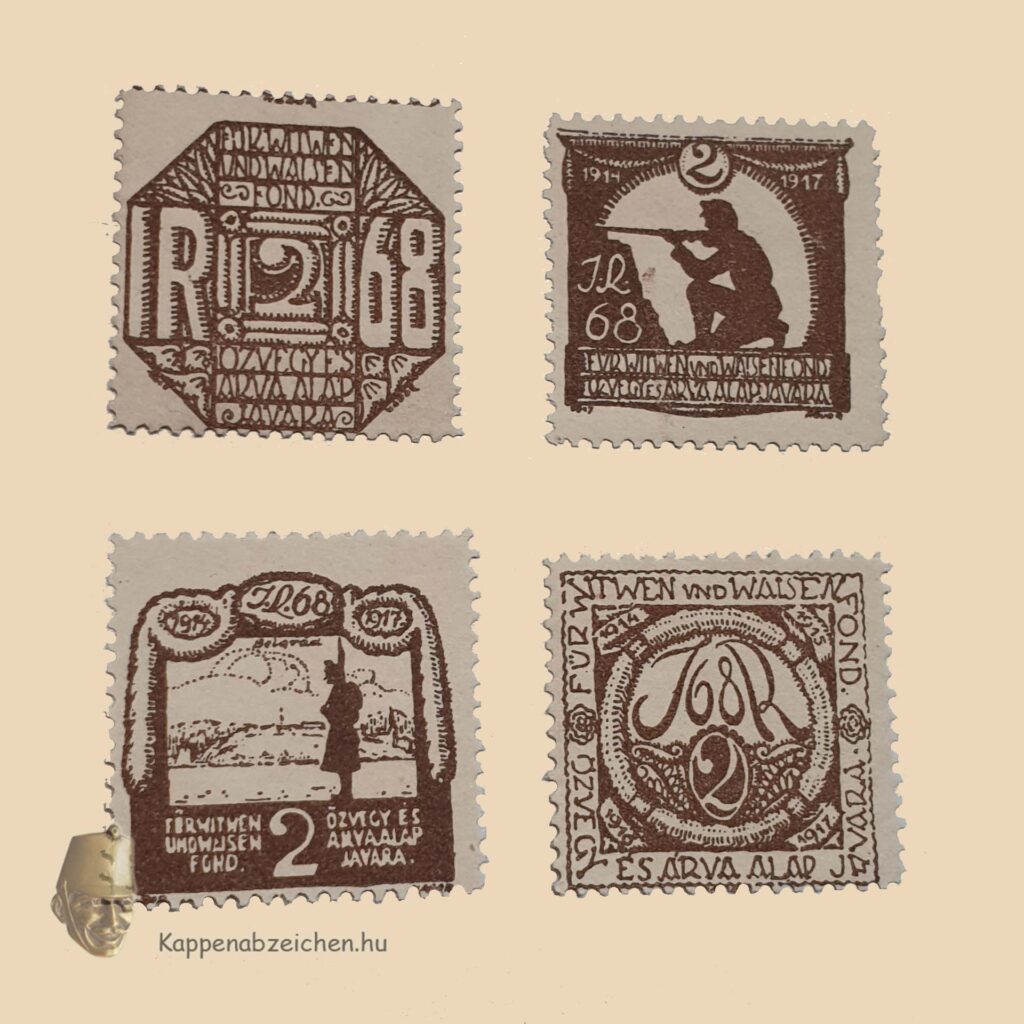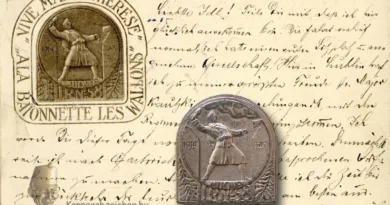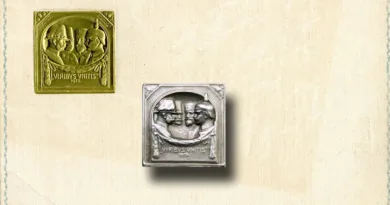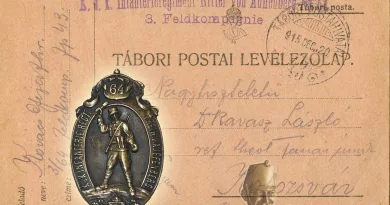IR 68 letter seals
My friend Gábor Csiszér’s post about the letter seals and flag badges of IR 68.
The 68th Infantry Regiment was at home in Jászság and Nagykunság. Its headquarters and cadre were in Szolnok, but the regiment was stationed at the Serbian border in Zimony. Postcards, letterheads, enamel cap badges and flag badges are all known from the regiment. Of these, we now present the letter seals and two types of flag badges.
The letter seals were printed with the brown lapel color of the regiment. The first such stamp depicts the image of the monument of the soldiers who fell on the regiment’s memorial day. In memory of their comrades who fell in the battle of Königgrätz in 1866, the city of Szolnok erected a monument on June 28, 1872. This letter seal was probably a pre-war edition.

In World War I, the regiment produced two series of letter seals for the benefit of widows and orphans. The first series consists of four pieces, the inscription IR 68 occupies a central place on each stamp. The first is an artistic composition (ornamentation), the second shows a kneeling soldier aiming. The third stamp shows a soldier standing guard, behind him is the outline of Belgrade, and the fourth has the regimental number in a wreath.
The second edition consists of five elements. These are the following: regimental bugler, bayonet or sword with the regimental number, charging infantry with the 68 flag, a soldier firing in a prone position, a soldier wearing a flower on his cap.

Both series of letter-sealing stamps worth two pennies were produced in a brown shade, their size was 30×30 mm. The size of the very first stamp is 35×55 mm.
You can already find the flag insignia of several infantry regiments on the site. The Arkanzas company produced a series of flag badges primarily for Hungarian infantry regiments. These badges have the same shape but are numbered differently. The color of the insignia is also different, because it is adjusted to the lapel color of the regiments. In many cases, during the production of successive series, the producer did not manage to prepare exactly the same fire enamel raw material. Thus, after the badges were burnt, the color of the enamels could have a slightly different shade. In the case of flag 68, the difference is even stronger than usual. Since the lapel color of the regiment was officially reddish-brown, the lighter shade is closer to it.




